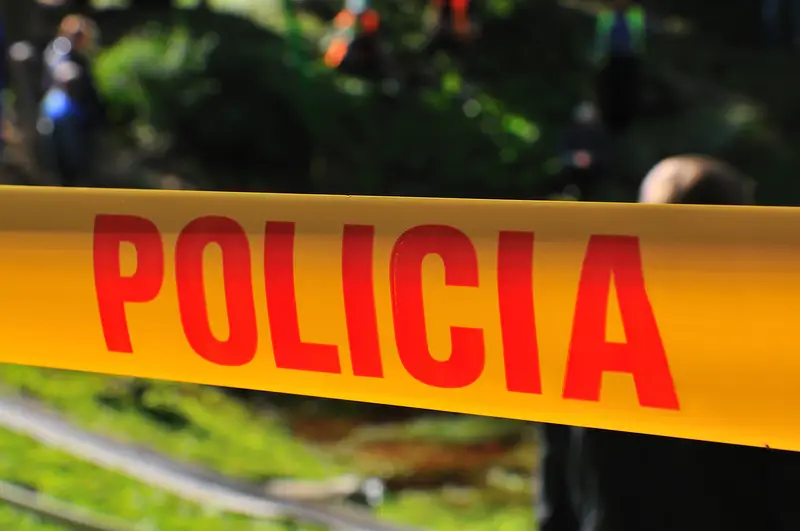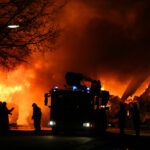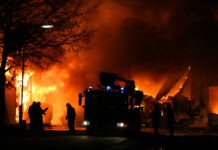On Thursday night, April 17, 2025, a group of armed men dressed in military attire stormed a cockfighting venue in rural Ecuador, resulting in the deaths of 12 individuals and leaving several others injured. This incident stands as one of the most severe attacks in the region this year.
The attack took place in La Valencia, located in El Carmen canton of Manabí province, underscoring the increasing insecurity in a nation once regarded as relatively peaceful in South America.
Security cameras recorded at least five men entering the cockfighting arena with automatic rifles and opening fire on the unsuspecting audience. Attendees sought cover as bullets riddled the venue. Survivors claimed that the assailants also absconded with approximately $20,000 in prize money during the attack.
“We have 12 people deceased as a result of an armed attack by a criminal group,” stated Police Colonel Renan Miller Rivera. He mentioned that several others were injured, although he did not provide an exact count of the wounded.
Following the shooting, authorities detained four suspects believed to be involved in the attack. Among those arrested was an individual identified by National Police Chief Victor Hugo Zarate as a “target of intermediate value,” allegedly linked to an organized crime group referred to as “R7.”
The attackers’ use of counterfeit military uniforms is a common tactic adopted by criminal gangs in Ecuador. This approach allows them to maneuver with greater freedom and potentially confuse both victims and law enforcement during their operations.
After the attack, police discovered abandoned military-style uniforms and two vehicles along a nearby highway. Colonel Rivera reported that one vehicle was set on fire, while the other was overturned, indicating attempts by the perpetrators to eliminate evidence and obscure their escape route.
Authorities released video footage displaying the recovery of concealed evidence, camouflaged under bags and tree branches. Confiscated items included eight rifles, four pistols, three shotguns, eight magazines, 11 cell phones, ballistic helmets, and tactical gloves, showcasing the sophisticated equipment used by these criminal organizations.
This violent act is part of a broader trend of increasing violence in Ecuador over recent years. The nation has experienced a significant rise in drug-related crime, with the homicide rate climbing from six per 100,000 residents in 2018 to a record 47 per 100,000 in 2023. January alone recorded 781 murders, marking the deadliest month in Ecuador’s contemporary history.
The attack in La Valencia is now considered the most lethal armed assault in Manabí’s history. The province was placed under a 60-day state of emergency on April 12 due to the escalating violence associated with criminal gangs.
Ecuador’s geographic positioning has made it a key transit point for illegal drugs, particularly cocaine, from nearby Colombia and Peru—the world’s leading cocaine producers—intended for markets in the United States and Europe. According to the Center for Strategic and International Studies, several elements contribute to Ecuador’s susceptibility to becoming a central hub in the international drug trade.
The organization highlighted that weak political institutions, a dollarized economy, and a free trade agreement with Europe have created optimal conditions for the transshipment of cocaine through Ecuador. President Daniel Noboa has stated that about 70% of the world’s cocaine now passes through Ecuador’s ports before reaching international destinations.
The country hosts approximately 20 criminal gangs involved in various illegal activities, including drug trafficking, kidnapping, and extortion. These groups have been competing for control over cocaine routes, leading to what police describe as nearly one killing every hour at the year’s start.
Since January 2024, Ecuador has been in a state of internal armed conflict, declared by President Noboa in response to the rising violence. The government has officially designated 22 gangs as terrorist organizations and has deployed military forces to counter their influence.
Criminal groups originating in the prison system have broadened their operations across Ecuador, leading to a fragmented criminal landscape as local gangs seek independence. Experts caution that the government’s heavily militarized strategy might yield only temporary outcomes without addressing the underlying causes of crime.
The growing presence of international criminal organizations has further complicated Ecuador’s security environment. Mexican cartels and European mafia groups have set up operations in the country, especially in coastal areas near major ports. These foreign entities have reportedly trained local gangs and introduced new criminal techniques, including extreme violence, to maintain territorial control.
As investigators continue to unravel the full details surrounding this violent event, many Ecuadorians remain anxious amid what has become one of Latin America’s most severe security crises.











